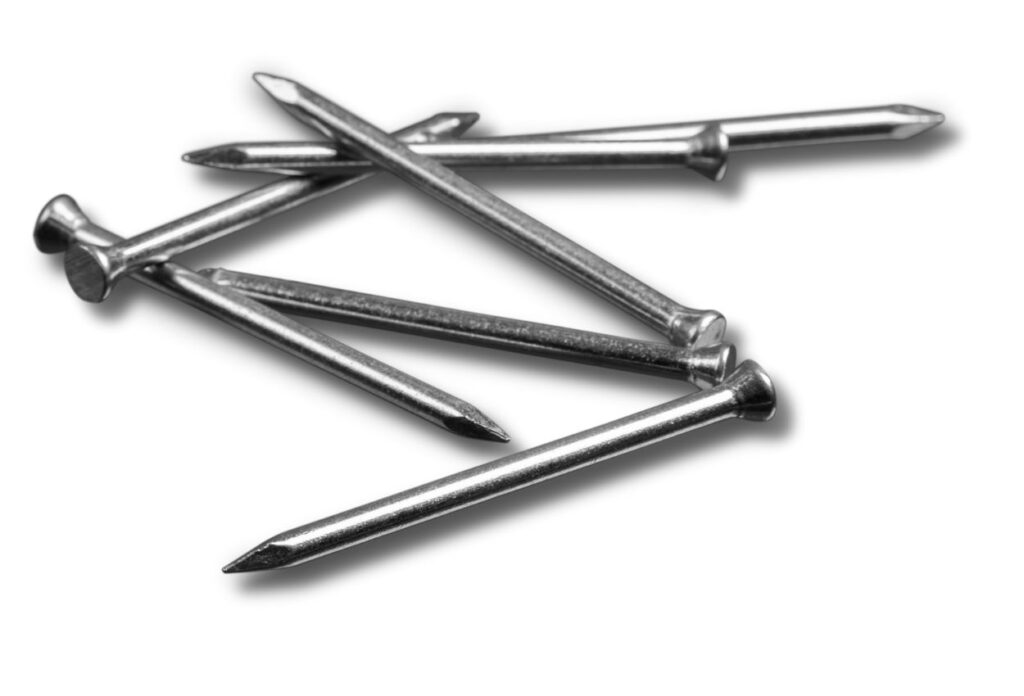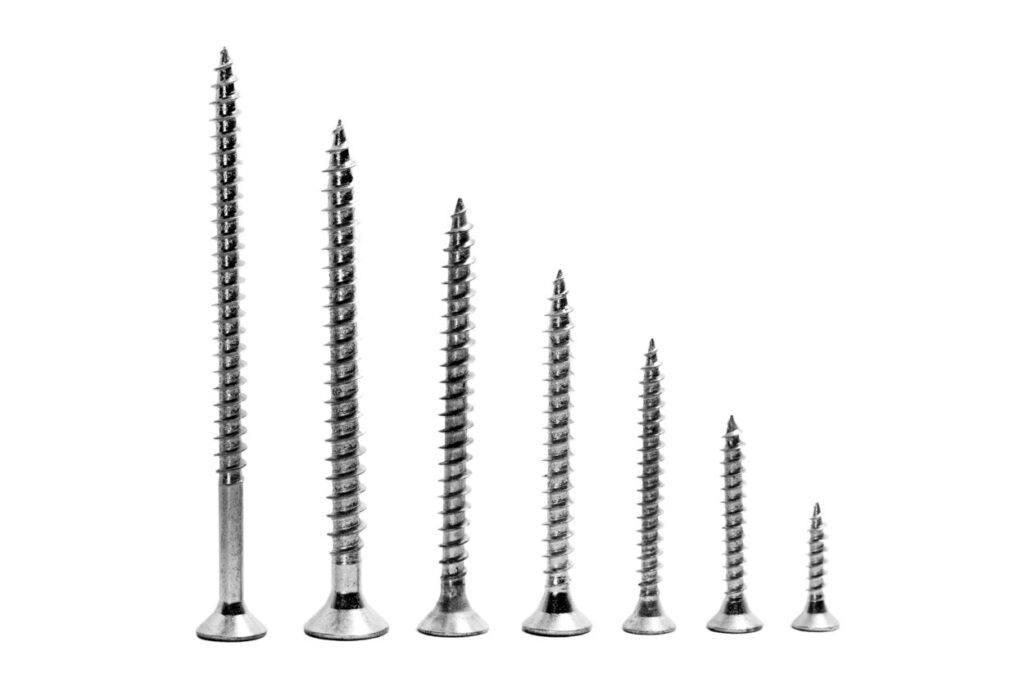When replacing your roof, you’re likely focused on the significant big-ticket items such as shingle types, underlayment options, and finding the right contractor. But at the same time, you should not ignore the small details, such as roofing nails. The nails hold your roof together, and while they seem like just a small detail, they have a large impact on the performance of your roofing system.
While you may not be the one nailing shingles into place, you should still be informed on what is being used for your roof replacement/installation project. The wrong nails can lead to loose shingles, leaks, or even a roof failure after just a few years — turning your expensive investment into an expensive headache.
In this blog post, we discuss what factors affect the choice of nails and answer some common questions that homeowners have.
Why Should Homeowners Care About Roofing Nails?
You might be wondering: “Isn’t nail selection my contractor’s job?” Yes, it is, and while a roof replacement is best left to professionals, knowing the roofing nails that are being used for your project helps make you a more informed homeowner. And being informed puts you in a position of power, especially during negotiations. It allows you to ask the right questions, spot red flags, and ultimately ensure that your roofing project meets the highest standards.
Here’s why the roofing nails are such an important part of a successful roofing project:
- The best roofing nails for your project make sure shingles stay securely fastened to the roof, protecting against wind uplift and water infiltration.
- Oklahoma’s strong winds, hail, and sudden temperature shifts demand roofing nails that can withstand harsh conditions.
- Some manufacturers require specific types of nails to maintain their warranty. If the wrong ones are used, you could unintentionally void a warranty.
- Low-quality nails can lead to loose or missing shingles, resulting in expensive repairs or even a full roof replacement sooner than expected.
By knowing these basics, you will be able to discuss the details with your roofing contractor and make sure your new roof is built to withstand Oklahoma’s weather.
Types of Roofing Nails (With Compatible Materials)
To choose the best roofing nails for your project, you should first know about the various types of nails and their strengths. This is because not all nails have the same level of capability with all roofing materials. In the following section, we dive deep into the most common roofing nails used today:
Smooth Shank Nails

These are the most basic roofing nails with a smooth surface along the shaft.
- Pros: Affordable and widely available
- Cons: Weaker holding power compared to other nail types
- Best for: Temporary roofing structures or minor repairs. Not ideal for long-term residential roofing in Oklahoma due to the wind-prone conditions
Ring Shank Nails
These nails have small ridges (rings) along the shaft, providing extra grip.
- Pros: Superior holding power and resistance to wind uplift
- Cons: Slightly more expensive than smooth shank nails
- Best for: Asphalt shingles and areas prone to strong winds, making them ideal for Oklahoma homes
Screw Shank Nails

Designed with a twisted shaft, these nails work like a screw when driven in, providing exceptional grip.
- Pros: Excellent resistance to wind and impact
- Cons: More expensive and harder to install
- Best for: Specialty roofing, such as wood shingles or heavy slate tiles
Coil Roofing Nails
These nails come in coils and are loaded into nail guns for faster installation.
- Pros: Efficient and ideal for large-scale roofing projects
- Cons: Quality varies by manufacturer, and poorly made coil nails can bend or snap.
- Best for: Asphalt shingle installation on residential homes
To learn more in detail about the types of roofing nails and top materials, visit our guide on roofing nails here.
Other Factors Affecting Your Choice of Roofing Nails
The type of nail you choose plays a major role in your roof. But to get the best nails, there are other factors that you should consider:
Choose The Best Nail Materials
The material of the nail directly impacts its durability. Oklahoma’s intense sun, wind, and rain demand roofing nails that can withstand the elements.
Best Materials for Oklahoma Roofs:
Galvanized Steel: Coated with zinc, galvanized nails are highly resistant to rust and corrosion. They’re the industry standard for asphalt shingles and hold up well in humid and storm-prone areas.
Best type: Hot-dipped galvanized nails offer stronger protection than electro-galvanized ones. Ask your contractor for this higher-quality option.
Stainless Steel: These nails are highly resistant to corrosion, which makes them ideal for coastal or humid environments. While more expensive, they’re worth it for durability — especially if you’re investing in premium roofing materials.
Copper: Best suited for slate and tile roofs, copper nails are corrosion-resistant and extremely durable. However, they aren’t necessary for asphalt shingles and add unnecessary expense.
Materials to Avoid:
- Aluminum: Prone to bending and corroding faster, aluminum nails are not as suitable for Oklahoma’s wind-prone environment.
- Low-Grade Steel: Inferior steel nails are cheap but are more likely to snap, rust, or fail prematurely.
Choose The Right Size Roofing Nails
The length of the nails is just as important as the type and material. Nails that are too short won’t properly anchor the shingles, while nails that are too long can create issues by puncturing underlayment or decking.
What Size Roofing Nails Are Perfect For Your Shingles?
- 1 inch to 1 ¼ inches: Suitable for thin roofing materials or repairs
- 1 ½ inches to 2 inches: The standard length for most asphalt shingles
- 2 ½ inches or longer: Used for wood shingles, thicker roofing materials, or multiple shingle layers
How to Know If the Nails Are the Right Length
Ask your contractor about the nail length they’re using. For most Oklahoma homes with asphalt shingles, nails should penetrate at least ¾ inch into the roof deck. This ensures a strong hold, even during high winds.
Choose A Reputable Brand
Apart from the size and the material, another thing that you should do is to ensure that your contractor installs the roofing nails manufactured by reputable brands in the industry.
Selecting nails from reputable, trusted brands ensures you’re getting consistent quality and performance.
Here are two of the brands that our roofers usually use.
- Grip-Rite®: Known for durable, high-quality galvanized and stainless steel roofing nails.
- Maze Nails®: Specializes in hot-dipped galvanized nails, offering excellent corrosion resistance.
Pro Tip: Ask your roofing contractor which brand of nails they use. If they name an unknown or low-cost brand, do some quick research to ensure it meets industry standards.
Questions to Ask Your Roofing Contractor
As a homeowner, you don’t need to be a nail expert, but knowing what to ask ensures your roof is built with quality materials. To sum up the information laid down, here is what you need to ask your chosen contractor:
- What type of roofing nails are you using? (Look for ring shank or screw shank nails.)
- Are the nails galvanized or stainless steel? (Galvanized nails are the standard for Oklahoma.)
- What length are you using? (Ensure at least 1 ¼ inches for asphalt shingles.)
- Which brand are you using? (Reputable brands are a good sign of quality.)
- Are the nails being properly driven? (No over- or under-driving.)
FAQ: How Many Roofing Nails Do You Need Per Square?
When installing asphalt shingles, you’ll need approximately 320 to 480 roofing nails per square (1 square = 100 square feet of roof). The standard practice is to use four nails per shingle, but in high-wind areas like Oklahoma, six nails per shingle is recommended for added durability. This increases the total to around 480 nails per square.
Using the right number of nails ensures that the roofing materials are properly secured to the roof, preventing shingle blow-off and helping to maintain the manufacturer’s warranty. Always confirm with your contractor whether or not you’re following the recommended nailing pattern for your region.
FAQ: Nail Gun vs. Hand Nailing: Which Is Better?
Hand nailing was the way to go in earlier years, especially when it came to installing asphalt shingles. However, now, most contractors recommend using a nail gun. It is faster and more efficient, but it can be a bit complex to use. For a successful installation, ensure your contractor uses properly calibrated nail guns. Over-penetrating or under-driving nails can lead to issues.
You can also read more in our blog post: Hand Nailing vs. Nail Gun Roofing: Which Is Better?
Trust Our Experts For Premier Roof Installation!
Choosing the best roofing nails may seem like a small detail, but it plays a huge role in your roof’s longevity. In Oklahoma, where high winds and storms are common, quality nails mean better protection.
If you’re considering a roof replacement, contact A. Fricker Roofing and Waterproofing at (918) 402-7167. Our expert team only uses the highest-quality materials, including premium roofing nails, to ensure your roof withstands Oklahoma’s unpredictable weather for years.

